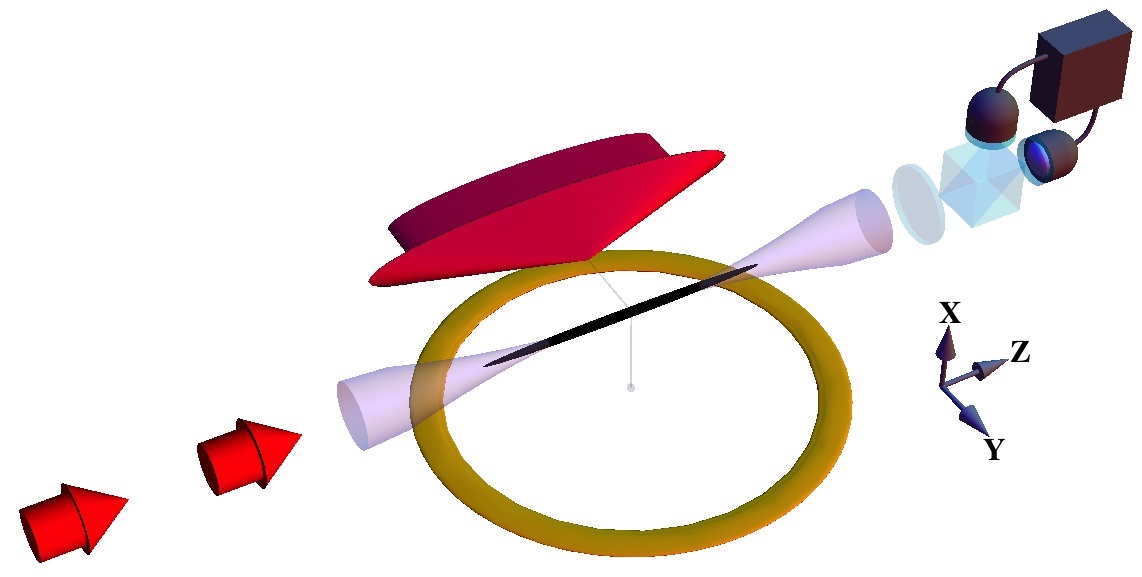28 July 2017
Researchers at ICFO have harnessed the weirdness of quantum entanglement to detect ultra-faint radio signals
In a study published in Physics Review Letters, and highlighted by APS Physics, ICFO researchers demonstrate a new technique for the coherent the detection of radio frequency magnetic fields using an atomic magnetometer. They use highly sensitive, nondestructive measurements to entangle the atoms, while maintaining their collective coherence, and a new technique to allow the coherent buildup of signal from arbitrarily shaped waveforms.
In this study, ICFO researchers Ferran Martin Ciurana, Dr. Giorgio Colangelo, Dr. Rob Sewell, led by ICREA Prof. at ICFO Morgan Mitchell, trap an ensemble of more than a million rubidium atoms which have been laser-cooled to 16 K, close to absolute zero. They apply a static magnetic field to the trapped atoms, so that the atomic spins precess (rotate) synchronously (coherently) at a precise frequency of 42.2 kHz, within the low frequency band used for AM radio broadcasting. They then apply a weak resonant radio frequency field in an orthogonal direction, which perturbs the atomic spin precession – this is the signal they want to detect.
In a standard rf magnetometer, the atomic spins are allowed to evolve freely for some time under the influence of this perturbation to allow the coherent buildup of signal, before the change in the atomic state is detected. Typically, this technique is only sensitive to an rf field applied at a fixed resonant frequency.
In this study, the authors use two techniques to improve their measurement. First, they use stroboscopic quantum non-demolition measurements to prepare an entangled atomic spin state at the start of the detection sequence. This allows them to reduce the quantum noise coming from the atoms, and improve the sensitivity of the magnetometer beyond the standard quantum limit. Second, they use a new technique developed in the group to allow the coherent detection of an rf field with a changing frequency – as is used, for example, in an FM radio broadcast. During the free evolution time, they use the applied static magnetic field to continuously shift the resonance frequency of the atoms to match the changing frequency of the rf field. This allows the atoms to coherently build up signal from a single arbitrary rf waveform, while blocking unwanted signals from orthogonal waveforms.
They then detect the perturbed atoms using a second stroboscopic quantum non-demolition measurement in order to measure the signal due to the rf field, and verify the entanglement generated among the atomic spins.
The researchers demonstrated their technique by detecting a linearly chirped rf field with a sensitivity beyond the standard quantum limit. They were able to measure the weak rf magnetic-field signal with a 25% reduction in experimental noise due to the quantum entanglement of the atoms, and a sensitivity comparable to the best rf magnetometers used to date.
The technique may have applications ranging from the detection of bio-magnetic fields, and characterization of micro-electronics, to searches for extra-terrestrial civilizations.

Detecting radio waves with entangled atoms
Ultra-sensitive receiver also blocks unwanted signals.

Schematic illustration of the experimental setup











